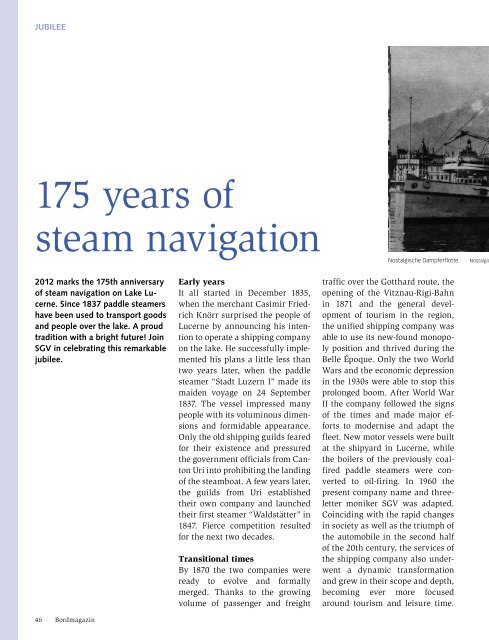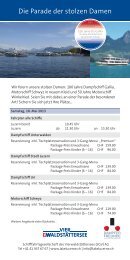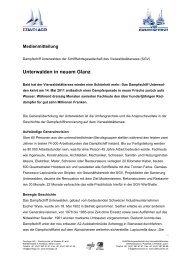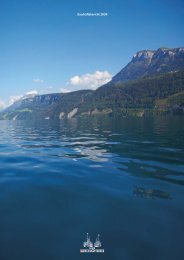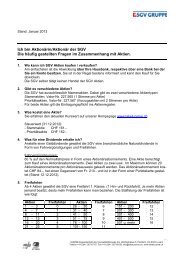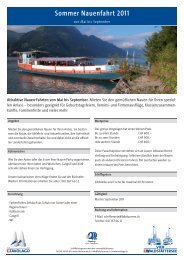Interview: Architekt Mario Botta entwirft das Mineralbad & Spa Rigi ...
Interview: Architekt Mario Botta entwirft das Mineralbad & Spa Rigi ...
Interview: Architekt Mario Botta entwirft das Mineralbad & Spa Rigi ...
Sie wollen auch ein ePaper? Erhöhen Sie die Reichweite Ihrer Titel.
YUMPU macht aus Druck-PDFs automatisch weboptimierte ePaper, die Google liebt.
jUBILEE<br />
175 years of<br />
steam navigation Nostalgische<br />
2012 marks the 175th anniversary<br />
of steam navigation on Lake Lucerne.<br />
Since 1837 paddle steamers<br />
have been used to transport goods<br />
and people over the lake. A proud<br />
tradition with a bright future! Join<br />
SGV in celebrating this remarkable<br />
jubilee.<br />
46 Bordmagazin<br />
Early years<br />
It all started in December 1835,<br />
when the merchant Casimir Friedrich<br />
Knörr surprised the people of<br />
Lucerne by announcing his intention<br />
to operate a shipping company<br />
on the lake. He successfully implemented<br />
his plans a little less than<br />
two years later, when the paddle<br />
steamer “Stadt Luzern I” made its<br />
maiden voyage on 24 September<br />
1837. The vessel impressed many<br />
people with its voluminous dimensions<br />
and formidable appearance.<br />
Only the old shipping guilds feared<br />
for their existence and pressured<br />
the government officials from Canton<br />
Uri into prohibiting the landing<br />
of the steamboat. A few years later,<br />
the guilds from Uri established<br />
their own company and launched<br />
their first steamer “Waldstätter” in<br />
1847. Fierce competition resulted<br />
for the next two decades.<br />
Transitional times<br />
By 1870 the two companies were<br />
ready to evolve and formally<br />
merged. Thanks to the growing<br />
volume of passenger and freight<br />
Dampferflotte. Nostalgic<br />
traffic over the Gotthard route, the<br />
opening of the Vitznau-<strong>Rigi</strong>-Bahn<br />
in 1871 and the general development<br />
of tourism in the region,<br />
the unified shipping company was<br />
able to use its new-found monopoly<br />
position and thrived during the<br />
Belle Époque. Only the two World<br />
Wars and the economic depression<br />
in the 1930s were able to stop this<br />
prolonged boom. After World War<br />
II the company followed the signs<br />
of the times and made major efforts<br />
to modernise and adapt the<br />
fleet. New motor vessels were built<br />
at the shipyard in Lucerne, while<br />
the boilers of the previously coalfired<br />
paddle steamers were converted<br />
to oil-firing. In 1960 the<br />
present company name and threeletter<br />
moniker SGV was adapted.<br />
Coinciding with the rapid changes<br />
in society as well as the triumph of<br />
the automobile in the second half<br />
of the 20th century, the services of<br />
the shipping company also underwent<br />
a dynamic transformation<br />
and grew in their scope and depth,<br />
becoming ever more focused<br />
around tourism and leisure time.


